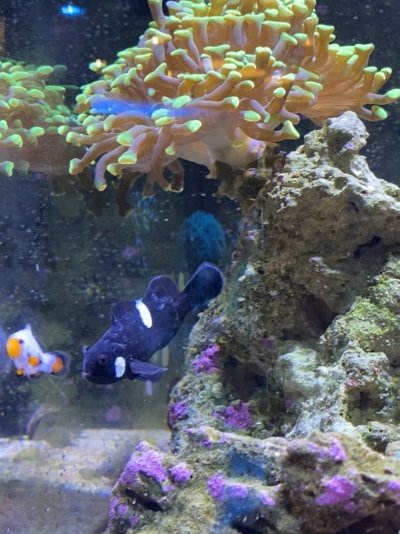I noticed some minor blemishes on my black and white clownfish yesterday which I didn’t think much of, but now today there are clearly whitish patches on her. I’m afraid it might be Brooklynella, but she seems to be acting normal, swimming around, eating, no heavy breathing. I wanted to get some more opinions on it before I order medication and qt her (and I guess her partner as well)

















